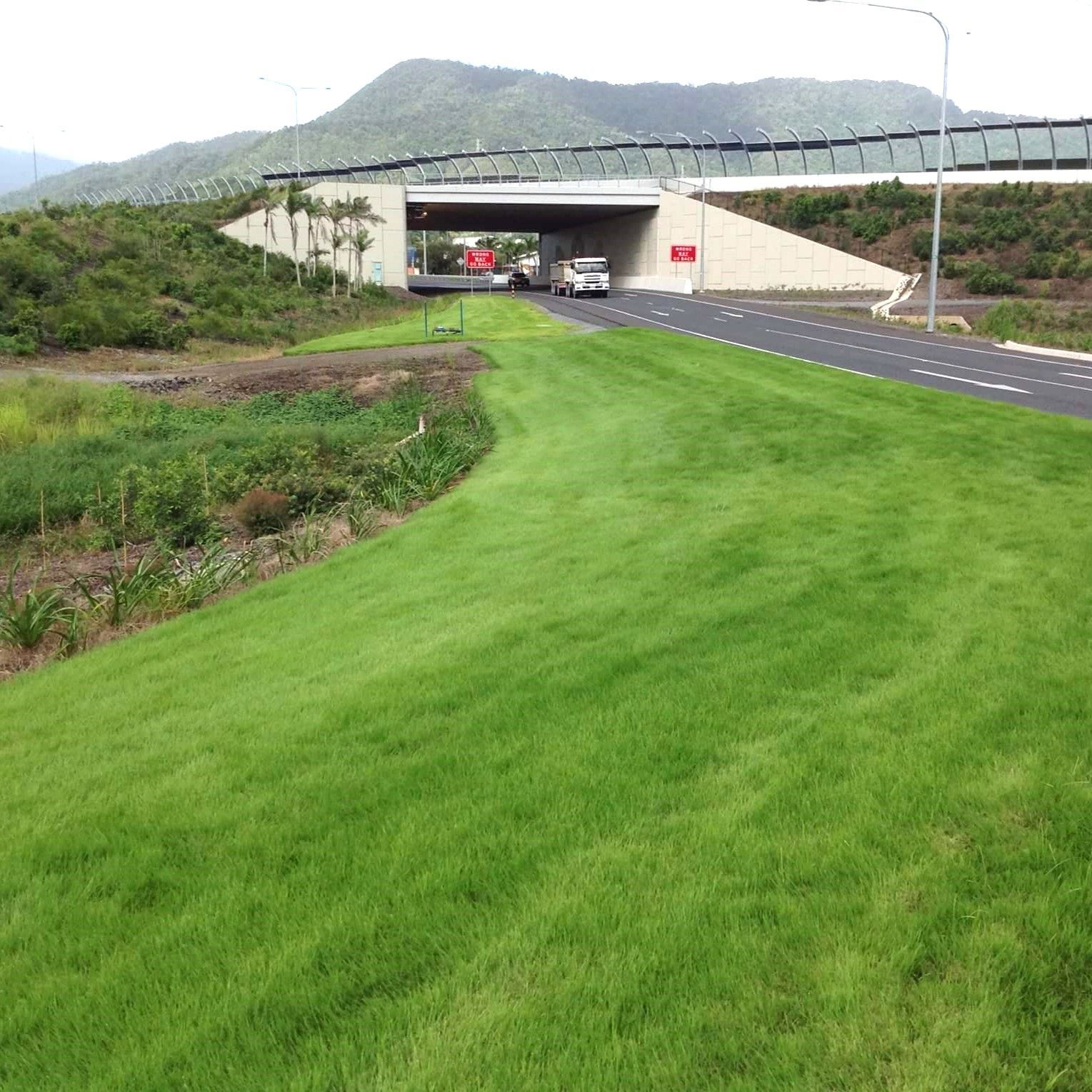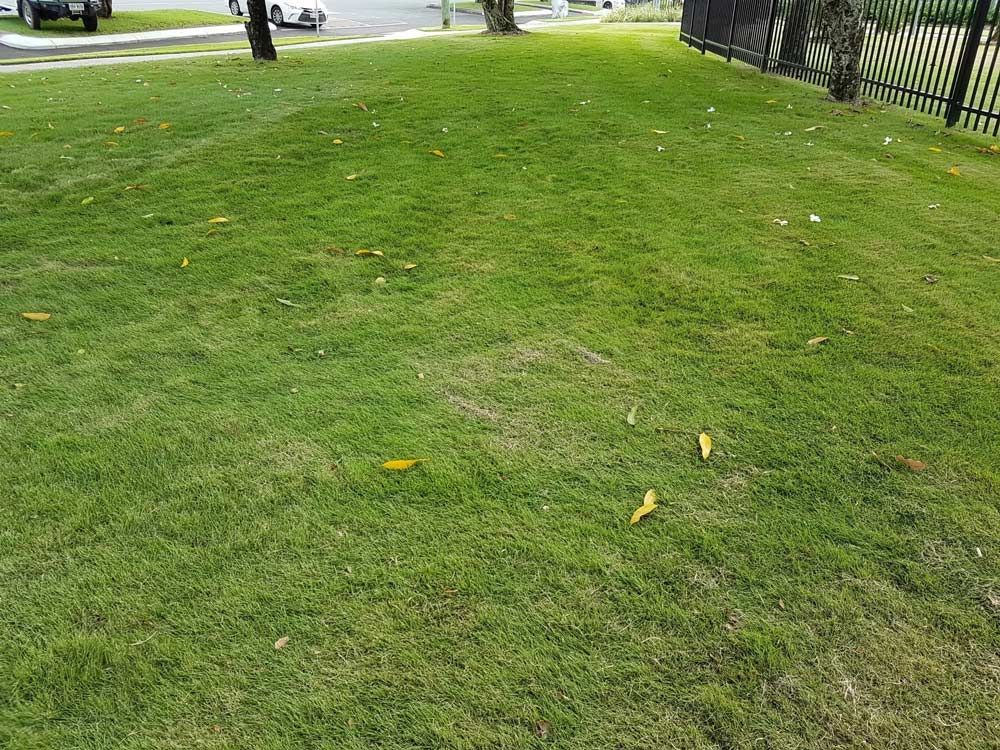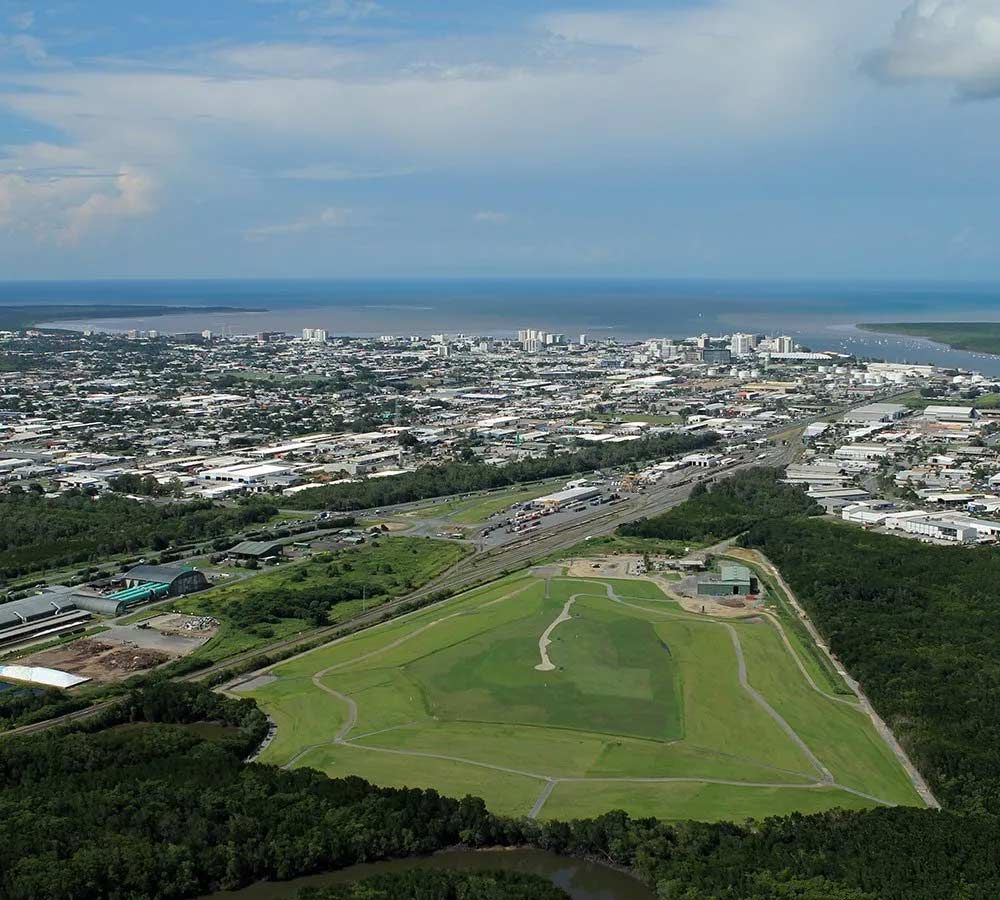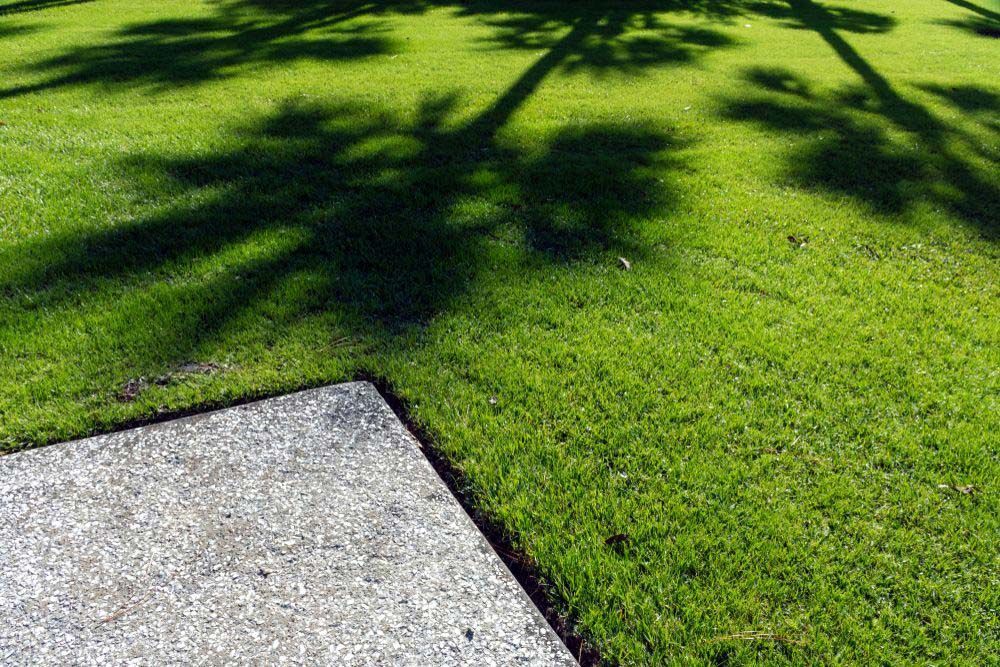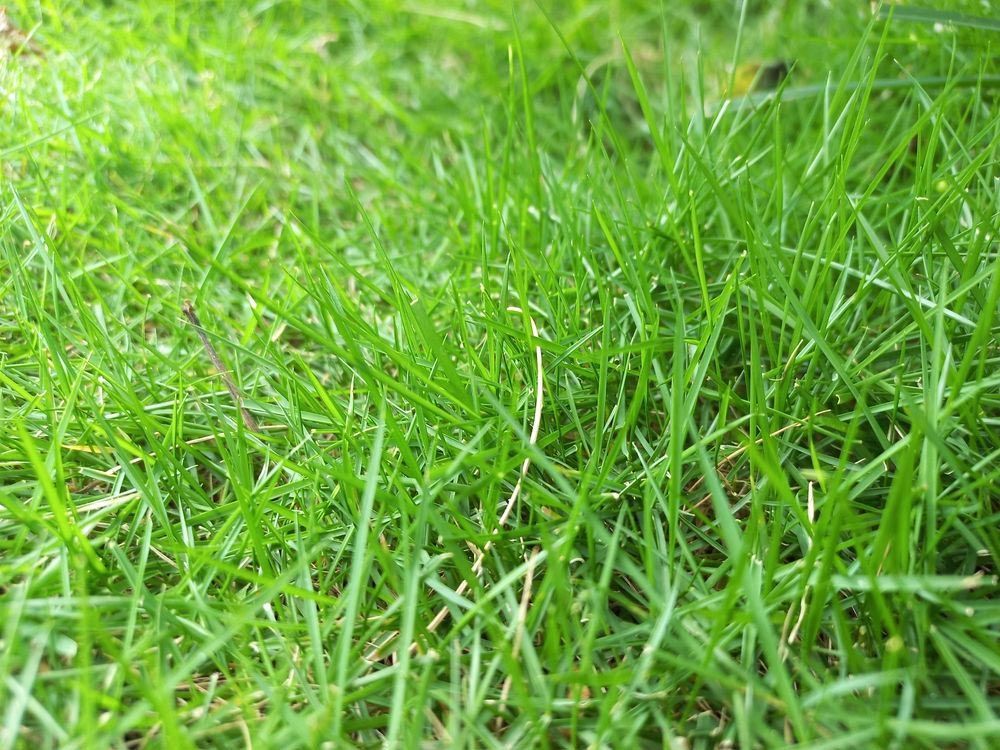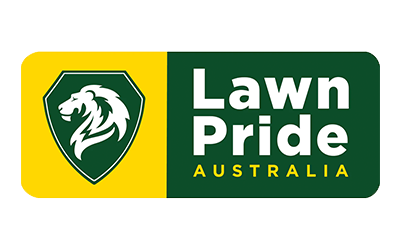Zoysia Maintenance
- Sustainable Lawns for Today and the Future
- Low-Maintenance, High-Performance Turf Varieties
- Specialists in Climate-Adapted Grass for Cairns
Get In Touch
Zoysia Grass Maintenance
There is no magic lawn grass variety that answers everybody’s ideal; they all have strengths and weaknesses; for example, most fast-growing competitive grasses are very high maintenance. More competitive weeds usually invade most slow-growing grasses. Once you understand them, Zoysia species can be the most environmentally sustainable turf grasses.
Their strengths include slow-growing, outcompeting weeds and low nutrient requirements. Zoysia is intermediate for water consumption and is a low-maintenance grass if appropriately managed. Recognising what is happening on your lawn is the key. If watered and fertilised heavily, Zoysia will respond with colour and vigour, and become a high-maintenance, thatchy lawn and need frequent mowing. The correct management is to fertilise sparingly; use mainly a nitrogen fertiliser unless nutrient deficiencies are in your soil base.
Have a question regarding Zoysia maintenance? Contact the experts at Tropical Lawns at
(07) 4056 1740.
When to Water
Water deeply once/week in the cooler months, then twice/week as evaporation increases in the summer months. Replace at least 80% of the weekly evaporation. If the daily evaporation rate is 8mm, the lawn is losing 56mm/week, water every third or fourth day with at least 20mm each time to keep a deep, drought-resistant root system. Water is more critical than a fertiliser in keeping your Zoysia looking good and performing sustainably.
The Do’s & Don’ts with Zoysia
Far and away, people’s biggest mistake is not to recognise that the lawn is growing and needs mowing. It is prevalent to see lawns that have been left for several months; the owner assumes that it is a slow-growing grass and hasn’t grown at all. They would have mowed it several times if they had a Couch or a Buffalo lawn. To their surprise, the Zoysia, while not tall or unruly, has grown and thickened and can be difficult to mow.
In general, Zoysia needs mowing only about half as often as Couch, Buffalo or Carpet grass. The same rule of mowing applies: take one-third of the green leaf area each time, and the clipping yield will be only about 15% of the amount removed from other species. This will keep the lawn neat and even and keep weed invasion to an absolute minimum.
Zoysia Application & Range
Zoysias have a broader range of use than other turf species, for instance, in heavy shade, down to three hours of sun per day, or in high salt areas where others will not survive. Grown on steep banks for erosion control is another common use; where there is no intention of mowing, the Zoysias only grow to about 150mm and stay neat and outcompete weeds while holding the soil from eroding.
Some species like Z.japonica/Pacifica are used in landscaping for their “lumpy” effect and are never mown. For the right Zoysia for your application, check turf producers’ websites for a number of choices, and talk to them about what performs best in your situation.
What We Can Offer
At Tropical Lawns, we take pride in offering customised turf solutions tailored to meet the specific needs of each garden in our community. Our range of services is carefully designed to accommodate various soil types, weather conditions and personal maintenance preferences. With our expertise in Zoysia grass maintenance, we ensure that your lawn remains lush, vibrant and healthy throughout the year.
Committed to sustainable lawn care, we use eco-friendly practices that are beneficial for both your garden and the environment. By reducing water consumption and bolstering the natural resilience of your turf, we lessen the reliance on chemical treatments, offering you a lawn care solution that is both greener and more sustainable.
Why Choose Tropical Lawns
At Tropical Lawns, we understand that choosing the right turf supplier is crucial for the health and beauty of your lawn. That's why we've distilled our key strengths into clear, concise points to help you make an informed decision. Here are the essential reasons why partnering with us will benefit your lawn care journey:
- Expert Knowledge: We ensure practical and effective solutions for your lawn care needs.
- Commitment to Quality: We rigorously test and select turf varieties for their durability, aesthetic appeal and ease of maintenance.
- Robust and Beautiful Lawns: Our turf is chosen to withstand various challenges, ensuring your lawn remains beautiful with minimal effort.
- Minimal Upkeep: Investing in our turf means enjoying a beautiful lawn with less effort and upkeep required.


